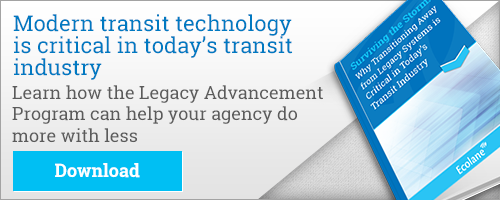In this modern and innovative world that we live in, many transit agencies find themselves having trouble keeping up with the times, specifically, when it comes to the growing need in the community for instant gratification and unbelievably fast service. This coupled with limited capacity can result in declining on-time performance (OTP) or other service quality issues. Throughout this article, we will introduce you to the main factors that affect these transit metrics and the solutions that our team of experts and other industry professionals have implemented to combat them.
What is affecting critical transit metrics?
For transit agencies, it can be hard to plan for the unexpected challenges that arise throughout the course of a year. However, it is important to understand what to look for in order to devise the right action plan. When it comes to OTP, there are a number of potential factors that can cause it to degrade. Things like excessive no-shows, unexpected traffic or mechanical issues on the day of service, incorrect configuration of route scheduling software, over-scheduling, and miscalculated load times can contribute to failing metrics. In the case of over scheduling, or miscalculated load times, this can be a result of either manual overrides from a well meaning dispatcher, or the result of improperly configured software. To understand how loading and unloading time affects your performance, consider the following example: if a passenger has a default load time of 2 minutes for one particular stop but in reality takes more like 4 to 5 minutes, this will put a vehicle only slightly behind schedule. However, if this kind of error is widespread amongst all your passenger data, it adds up quickly and your overall on-time performance will suffer.
No-show rates are also a contributing factor to on-time performance, but they aren't always completely in your control. The most common cause of no shows have to do with people that lose track of time, or even forget their appointment altogether. For example, if someone wants to take an afternoon trip to the mall and schedules a trip accordingly, they will be picked up and dropped off at the mall at the requested time, but if they spend too much time shopping and miss their second pick up time, they will be counted as a no-show and the system will have to adjust to create another time slot for them. Not only does this affect no-show rates, it will also affect on-time performance and rides per hour. And if your on-time performance is poor, passengers may leave the pick-up stop which will further contribute to no-shows.
How can these issues be solved?
Now, we can jump into what you came here for. Remember, all of your performance metrics are connected, and one change can make an impact on each piece that we discussed above. For example, say you are looking into on-time performance and you notice that you are finding increased no-show rates for a particular stop due to consistently late arrivals. Scheduling accordingly to give the driver additional time to make it to the stop, even if it's just a few minutes, will positively affect both on-time performance and no-show rates. After all, for a majority of agencies, a significant percentage of late trips are less than few minutes behind schedule, so there is a tremendous amount of opportunity to improve your on-time performance by making very small changes to your operation. You can often do this simply by adjusting the configuration of you scheduling software, or by coaching your drivers on optimizing their stop procedures. Taking this one step further and utilizing software tools like SMS messaging to alert people to when and where they are scheduled for their pick-up will also decrease no-show rates and improve on-time performance.
We all know what problems can plague an agency, but the solutions are much harder to find. Sometimes it can be as simple as internal communication efforts between drivers, dispatchers, and the rest of the operations team. However, at other times it can be complicated and an overhaul of the software system needs to be conducted. If you find yourself in the latter situation, we recommend reaching out to your provider for a comprehensive audit that will help highlight the misuses that are creating issues with your transit metrics.
Decoding the metrics of transit operations can be a tough task without having the right tools to provide meaningful data. Our team of experts are standing by to help you make the transition to modern route scheduling software for your agency. To learn more about making the switch, download our eBook.
About the Author

Ecolane
Read Ecolane's blog articles for perspective, opinion and information on transit and paratransit issues.
%20(200%20x%20100%20px).png)

